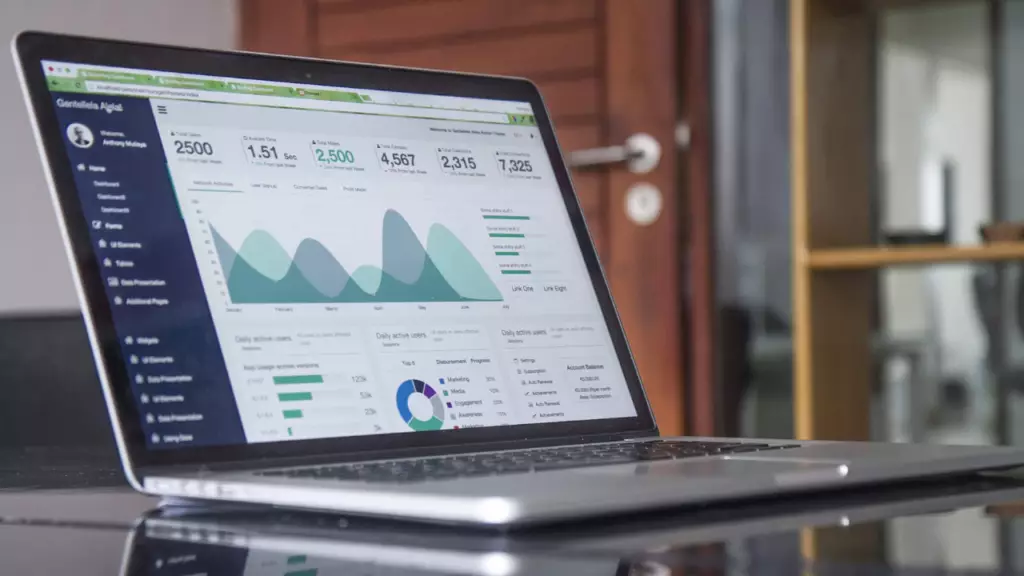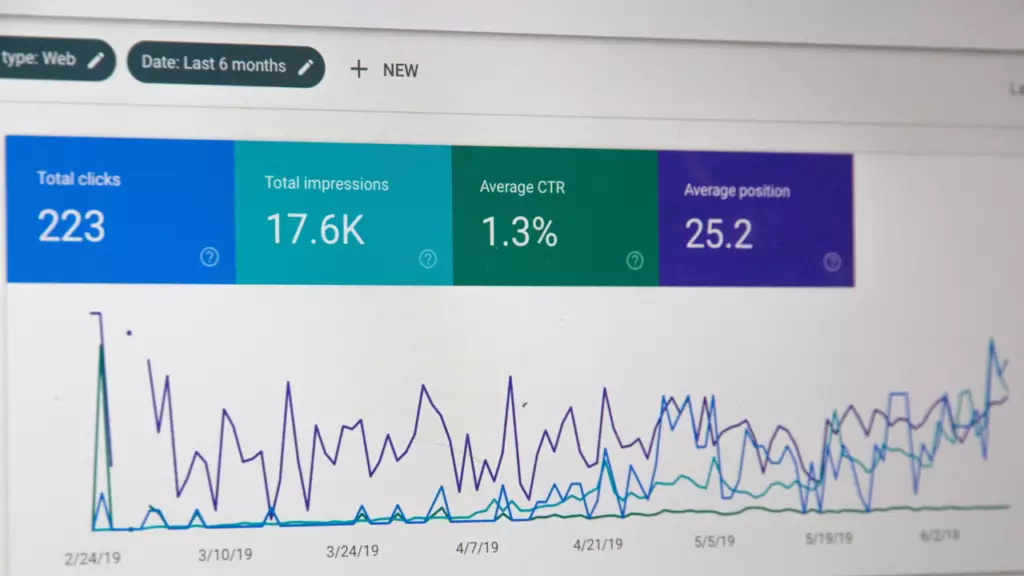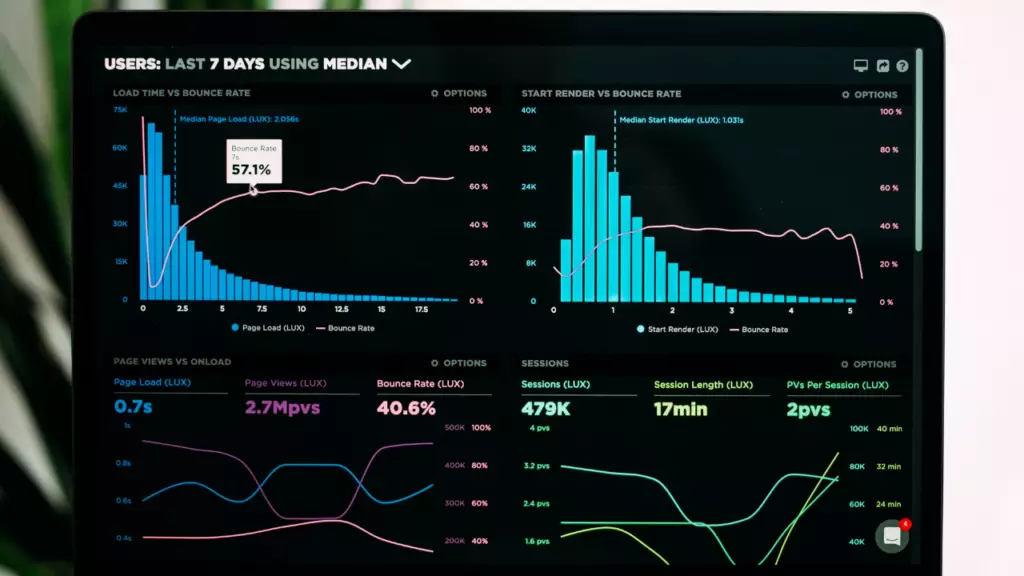Keeping track of your competition is crucial in today’s digital landscape, and one of the best ways to do this is by tracking competitors website traffic. By understanding your competitor’s website traffic, you can gain valuable insights into what strategies are working for them and adjust your own digital marketing approach accordingly.
In this article, we will explore 7 proven strategies for tracking competitor website traffic, including using Google Analytics, other analytics tools, web scraping techniques, conducting surveys, leveraging social media insights, and more. Whether you’re a seasoned marketer or just starting out, this article will provide you with actionable tips to help you stay ahead of the competition.
Understanding the Importance of Tracking Competitors Website Traffic

One of the key indicators of your competitors’ performance is their website traffic. Understanding the importance of tracking competitor website traffic is vital to staying ahead in the game and making informed decisions for your own online presence.
The benefits of tracking competitor traffic
By tracking competitor traffic, you gain valuable insights into their marketing strategies, strengths and weaknesses, and overall performance. This information can be used to make data-driven decisions and refine your own digital marketing approach. It can also help you identify gaps in the market, allowing you to tailor your products or services to better meet the needs of your target audience. Additionally, monitoring your competitor traffic helps you stay up-to-date with the latest industry trends, allowing you to remain competitive in a rapidly changing digital landscape.
In addition to staying ahead of the competition, competitor analysis also has a direct impact on your own website’s performance. It provides you with valuable insights into what is driving traffic to your competitors’ sites, and what you can do to improve your own site traffic. This could mean improving your website’s visibility, user experience, optimising your content for search engines, or identifying new opportunities to reach your target audience. With this information, you can make informed decisions to grow your business and reach your goals faster.
How tracking competitor website traffic can inform your marketing strategy
Tracking competitor website traffic is a crucial aspect of developing an effective marketing strategy. By monitoring your competitors’ website traffic, you can identify the channels that drive the most traffic to their site, such as social media, organic search, or paid advertising. This information can then be used to inform your own content marketing efforts and allocate resources to the channels that will have the greatest impact on your business.
In addition to identifying the most effective channels for driving traffic, tracking competitors traffic also provides insights into the types of content that resonate with your target audience. By analyzing the content that is popular on your competitors’ websites, you can gain a deeper understanding of what your audience is looking for and create content that meets their needs. This could involve producing blog posts, videos, or other types of content that are specifically designed to drive traffic and engagement. By aligning your content with the needs of your target audience, you can improve your website’s se ranking (search engine ranking), increase your website traffic, and ultimately drive more conversions.
Using Google Analytics for Competitor Website Traffic Analysis

GA (Google Analytics) is a powerful tool for understanding and analyzing website traffic, and it’s just as valuable for monitoring and analyzing the website traffic of your competitors. In this section, we’ll explore how to use GA to gain insights into your competitors’ website traffic and inform your own marketing strategy. From setting up custom dashboards to tracking key metrics, we’ll cover the essential steps for using GA to its full potential.
Setting up GA for competitor website tracking
The first step in using GA for competitor website traffic analysis is to set up tracking for the websites you want to monitor. This involves adding the GA tracking code to each website, which allows GA to collect data on website traffic and behavior. If the website you want to track has a public facing GA account, you can simply add the tracking code to your own GA account and start tracking their website traffic data.
If the competitor website you want to track does not have a public facing GA account, you will need to use a tool such as Google Tag Manager to set up tracking for their website. With Google Tag Manager, you can add the Google Analytics tracking code to the competitor website without needing access to their website code. This allows you to track their website traffic data alongside your own, giving you a comprehensive view of both your website and your competitor website performance in GA.
Navigating GA to analyze competitors traffic
Once you have set up tracking for your competitor’s website in GA, you can start analyzing their website traffic data to inform your own marketing strategy. To get started, navigate to the Audience Overview report in your GA account to see an overview of the competitor website’s traffic data. This report provides information on the number of sessions, pageviews, and average session duration for the website, giving you a high-level understanding of the website’s overall performance.
From the Audience Overview report, you can delve into more detailed reports to gain a deeper understanding of your competitor’s website traffic. For example, the Acquisition report provides information on how visitors are reaching the competitor site, including the top traffic sources such as organic search, direct traffic, or referral traffic. The Behavior report provides information on the pages on the competitor site that are driving the most traffic and engagement, giving you insights into the types of content that are resonating with the target audience. By leveraging the information available in GA, you can gain a comprehensive understanding of your competitor’s website traffic and use this information to inform and optimize your own marketing strategy.
Interpreting the data collected from GA
Interpreting the data collected from Google Analytics requires a deep understanding of the various metrics and dimensions available in the platform. To make the most of the data collected from your competitor’s website, it’s important to focus on the key metrics that matter most to your business. For example, if your business is focused on driving online sales, you may want to focus on metrics such as conversion rate and average order value.
When interpreting the data collected from Google Analytics, it’s also important to consider the context of the data. For example, seasonal trends and promotions can have a significant impact on website traffic and engagement. By considering the context of the data, you can gain a more accurate understanding of the performance of your competitor’s website and make informed decisions about your own marketing strategy. Additionally, it’s important to regularly monitor and analyze the data collected in Google Analytics to identify trends and changes in the competitor’s website traffic over time.
Using Other Analytics Tools for Competitor Analysis

While Google Analytics is a powerful tool for tracking competitor website traffic, it’s not the only option available. There are several other analytics tools that can help you gain deeper insights into your competitor’s website performance. These tools offer a range of features and functionalities that can help you better understand your competitor’s website traffic and make informed decisions about your own marketing strategy.
Popular analytics tools for competitor analysis
Some of the most popular analytics tools for competitor traffic analysis include SEMrush, Similar Web, Google Search Console and Moz. These tools provide valuable insights into a competitor’s website traffic, including information on their organic search visibility, top referral sources, and audience demographics. These tools can also provide you with valuable insights into the keywords your competitors are ranking for and the strategies they are using to drive traffic to their website.
In addition to these popular analytics tools, there are several other tools available that can help you track competitor site traffic. For example, Ahrefs provides in-depth analysis of a competitor’s backlink profile, while Moz provides insights into a competitor’s on-page SEO. By using a combination of these tools, you can gain a comprehensive understanding of your competitor’s website traffic and make informed decisions about your own marketing strategy.
The advantages and disadvantages of using different tools
Each competitor traffic analysis tool has its own set of advantages and disadvantages. For example, SEMrush offers a wide range of features and is ideal for businesses of all sizes, but it can be more expensive compared to other tools. On the other hand, SimilarWeb is a more affordable option but may not provide as much in-depth analysis as other tools. When choosing a tool for tracking competitors traffic, it’s important to consider your specific needs and budget.
Another important factor to consider when choosing a competitor traffic analysis tool is the level of technical expertise required to use it effectively. Some tools are more user-friendly and require minimal technical knowledge, while others require a deeper understanding of web analytics. It’s important to choose a tool that you feel comfortable using and that will provide you with the data and insights you need to make informed decisions about your marketing strategy.
Choosing the right tool for your needs
When selecting the right tool for tracking competitor website traffic, it’s important to consider your specific business goals and needs. For example, if your main focus is to monitor competitor rankings and keyword strategies, then SEMrush would be a good choice. On the other hand, if you want to track competitor website traffic sources and engagement, then SimilarWeb may be a better option.
Another factor to consider is the level of detail and accuracy of the data you need. Some tools provide a broad overview of competitor website traffic while others provide more in-depth analysis. It’s important to choose a tool that offers the level of detail you need to inform your marketing strategy and make data-driven decisions. Keep in mind that the right tool for you may change over time as your business evolves, so it’s important to regularly reevaluate your needs and make sure the tool you’re using still meets them.
Employing Web Scraping Techniques for Competitor Analysis
Web scraping techniques provide an alternative approach to tracking competitor website traffic, giving businesses a way to gather data directly from websites without relying on third-party tools. This method can provide more accurate and up-to-date data, especially for niche industries or markets that may not be covered by traditional analytics tools.
Understanding the basics of web scraping
Web scraping is a method of extracting data from websites and converting it into structured information that can be analyzed and utilized for various purposes. It involves sending requests to a website’s server and collecting the HTML code, which can then be parsed and transformed into useful data. This approach provides a way to access and analyze data that may not be available through other methods, and can be especially useful for competitor website traffic analysis.
While web scraping can be a powerful tool, it is important to understand the technicalities and ethical considerations involved in the process. Some websites have measures in place to prevent scraping, such as rate limiting or CAPTCHA challenges, and it is important to respect these limitations. Additionally, the legality of web scraping can vary depending on the country and specific use case, so it is crucial to familiarize oneself with the relevant laws and regulations.
Scraping competitor website traffic data
Web scraping is a powerful technique for collecting competitor website traffic data. This method involves automating the process of extracting data from websites, which can be a time-consuming and complex process if done manually.
To scrape competitor website traffic data, you need to use specialized software or tools that can extract specific data points from your competitors’ websites. The process involves sending a request to the website, collecting the response, and then parsing it to extract the relevant information.
Web scraping can provide valuable insights into competitor website traffic, including the number of visitors, their location, and their behavior on the site. This information can help you to gain a better understanding of your competition and make informed decisions about your own marketing strategy.
Analyzing competitor website traffic data obtained through web scraping
Web scraping allows you to collect large amounts of data from a competitor’s website, giving you valuable insights into their website traffic. However, it’s crucial to make sure that you’re following ethical and legal guidelines when scraping data.
Once you have obtained the competitor website traffic data through web scraping, it’s essential to analyze it effectively to extract meaningful insights. This includes understanding the patterns and trends in the data, identifying peak traffic times, and comparing your own website traffic to that of your competitors. By using this data to inform your marketing strategy, you can make informed decisions and stay ahead of the competition.
Conducting Surveys to Gather Competitor Website Traffic Information
The use of surveys as a means to gather competitor website traffic information is a valuable tool for any marketer looking to stay ahead of the competition. By reaching out directly to your target audience, you can gain valuable insights into the behavior and preferences of your competitors’ customers. In this section, we will delve into the world of conducting surveys to gather competitor website traffic information, covering everything from the basics to the analysis of the collected data.
Designing effective surveys to gather competitor website traffic information
Designing effective surveys to gather competitor website traffic information is a crucial step in your competitor website traffic analysis journey. The survey must be designed in such a way that it elicits accurate and relevant information regarding competitor website traffic. To achieve this, the following steps should be considered when designing your survey:
- Define your target audience: Identify who your target audience is and make sure that they are representative of your competitors’ customers.
- Determine the information you want to gather: Decide on the specific information you want to gather regarding competitor website traffic, such as website visit frequency, website sources, and pages visited.
- Choose the right method of distribution: Determine the best method of distribution for your survey, such as email, online surveys, or in-person interviews.
- Write clear and concise questions: The questions in your survey should be clear, concise, and directly related to the information you want to gather.
- Test the survey: Before distributing the survey, test it to ensure that it works as intended and that the questions are clear and easy to understand.
Reaching out to the right target audience
Reaching out to the right target audience is crucial for gathering accurate and relevant competitor website traffic information. To ensure the success of your survey, it is important to identify who your ideal respondents are and where they can be found. This could be current or past customers, industry experts, or other relevant stakeholders.
Once you have a clear understanding of your target audience, you can then create a targeted outreach plan to maximize response rates and ensure the quality of the data you collect. Utilizing tools such as email campaigns, social media ads, google ads or targeted outreach lists can help you reach your target audience effectively.
Additionally, offering incentives such as discounts, free trials, or access to exclusive content can increase the likelihood of respondents participating in your survey. By carefully selecting and reaching out to the right target audience, you can gain valuable insights into your competitors’ website traffic.
Interpreting survey results to inform your marketing strategy
When it comes to interpreting survey results related to competitor website traffic, it’s crucial to look beyond the raw numbers and focus on the insights and patterns that emerge. By analyzing the data in a meaningful way, you can gain a deeper understanding of your competitors’ strengths and weaknesses, and identify areas where you can improve your own website and marketing efforts.
To get the most out of your survey results, consider using tools like data visualization and statistical analysis to help you identify trends and patterns in the data. You may also want to look at the results in the context of other market research and industry data to gain a more complete picture of your competitors’ website traffic.
Leveraging Social Media Insights for Competitor Website Traffic Analysis

Social media has become a crucial aspect of our daily lives and it’s no different for businesses. With billions of active users, social media platforms offer an abundance of valuable insights, including competitor website traffic analysis. By leveraging social media insights, businesses can gain a competitive edge and improve their marketing strategy. This section will delve into how you can use social media to analyze competitor website traffic and stay ahead of the game.
How social media can provide valuable insights into competitor website traffic
Social media platforms offer valuable information that can be used to analyze competitor website traffic. These platforms have a large user base and a wealth of data that can be mined to gain insights into the behavior of your competitors’ target audience. By understanding what content resonates with the audience, businesses can use this information to improve their own marketing strategy and drive more traffic to their website.
By analyzing competitor website traffic data through social media insights, you can gain a deeper understanding of the target audience, their preferences, and the types of content that attract their attention. You can use this information to create targeted, relevant content that will engage your own target audience and drive traffic to your website. Additionally, you can use social media insights to identify trends and patterns in your competitor’s website traffic, allowing you to stay ahead of the curve and stay ahead of the competition.
Utilizing social media analytics tools for competitor website traffic analysis
Social media analytics tools are a valuable resource for gaining insights into competitor website traffic. These tools allow you to monitor and analyze various metrics, such as engagement, reach, and audience demographics, to understand the impact of your competitor’s social media presence on their website traffic. By analyzing this data, you can gain a better understanding of what resonates with your competitor’s target audience, and make informed decisions about your own marketing strategy.
There are several social media analytics tools available, each with its own unique set of features and benefits. For example, some tools focus specifically on Twitter or Instagram, while others offer a more comprehensive overview of all your competitor’s social media channels. When selecting a social media analytics tool, it’s important to consider your specific needs and goals, and choose a tool that will provide you with the insights you need to inform your marketing strategy.
Integrating social media insights into your marketing strategy
Social media is a powerful tool that can provide valuable insights into competitor website traffic. By leveraging social media, businesses can gain a deeper understanding of how their competitors are performing and what strategies are working for them. One way to do this is by utilizing social media analytics tools. These tools can help businesses track and analyze social media metrics such as engagement, reach, and followers. By integrating these insights into your marketing strategy, you can make informed decisions about how to effectively compete in your industry.
For example, if you see that a competitor is getting a lot of engagement on a specific type of post, you can use that information to inform your own content strategy. This could involve creating similar content, or finding new and innovative ways to stand out from the competition. Additionally, by tracking social media metrics, you can get a sense of how your competitors are reaching their target audience, and what tactics they are using to engage with their followers. This information can help you identify areas where you can improve your own marketing efforts and ultimately drive more traffic to your website.
Staying Ahead of the Competition through Continuous Tracking and Analysis
In today’s highly competitive business landscape, it’s crucial to stay ahead of the game by continually tracking and analyzing your competitor’s website traffic. This will help you to understand your competitors’ strengths and weaknesses, and give you valuable insights into how you can improve your own online presence and marketing strategy.
The importance of continuous tracking and analysis
Continuous tracking and analysis of competitor website traffic is crucial in staying ahead of the competition. By regularly monitoring changes in website traffic patterns and trends, businesses can quickly adapt and make informed decisions to stay ahead of their competitors. This not only helps businesses to better understand their competitors, but also to identify new opportunities for growth and improvement.
In order to be effective, continuous tracking and analysis must be systematic and thorough. This means that businesses must have clear goals and objectives in place, and use a consistent methodology to track and analyze competitor website traffic data. Furthermore, they must be equipped with the right tools and techniques to obtain accurate and relevant information. By combining a structured approach with the right resources, businesses can stay ahead of the competition and achieve long-term success.
Strategies for staying up-to-date with competitor website traffic data
Staying up-to-date with competitor website traffic data is essential for staying ahead of the competition. It allows businesses to adapt to changes in the market and make informed decisions about their own marketing strategies. Regularly monitoring competitor website traffic can provide valuable insights into industry trends and customer preferences, helping businesses stay ahead of the curve.
One effective strategy for staying up-to-date with competitor website traffic is to set up regular reports and alerts. This can be done through Google trends, Google Analytics or other analytics tools, and can be customized to provide the specific data that is most relevant to a business’s needs. Another strategy is to conduct regular surveys and gather data through social media insights, which can provide valuable real-time information about competitors and industry trends. By continually tracking and analyzing competitor website traffic, businesses can stay ahead of the competition and make informed decisions about their own marketing strategies.
The role of technology in tracking and analyzing competitor website traffic
The role of technology in tracking and analyzing competitor website traffic cannot be overstated. The availability of advanced tools and platforms has made it easier for businesses to collect and analyze data on their competitors’ website traffic. Automated tracking and monitoring solutions can provide real-time data on competitor website traffic trends, allowing businesses to stay ahead of the competition. In addition, these tools often offer sophisticated features such as machine learning algorithms and predictive analytics, which can help businesses uncover new insights and make data-driven decisions.
By leveraging the latest technology, businesses can save time and resources while staying ahead of the competition. Whether you are using Google Analytics, social media analytics tools, or web scraping techniques, the right technology can help you stay informed on competitor website traffic trends. With continuous tracking and analysis, you can gain a deeper understanding of your competitors and the market, enabling you to make informed decisions and stay ahead of the competition. Utilizing technology to track and analyze competitor website traffic is essential for businesses looking to succeed in today’s fast-paced and highly competitive environment.
In Conclusion
Competitor website traffic analysis is a crucial aspect of digital marketing, providing valuable insights into the behavior and preferences of your competitors’ customers.
There are several methods to gather competitor website traffic information, including the use of analytics tools, web scraping techniques, and conducting surveys.
Analytics tools provide an easy and convenient way to gather data, while web scraping techniques offer a more accurate and up-to-date approach, allowing businesses to gather data directly from websites.
Surveys offer a way to reach out directly to your target audience and gather information about competitor website traffic.
Regardless of the method used, it is essential to analyze the data effectively to extract meaningful insights and inform your marketing strategy. With a comprehensive understanding of your competitors’ website traffic, businesses can make informed decisions and stay ahead of the competition.
Check out our seo services and feel free to contact us if you have any questions about this particular topic.






